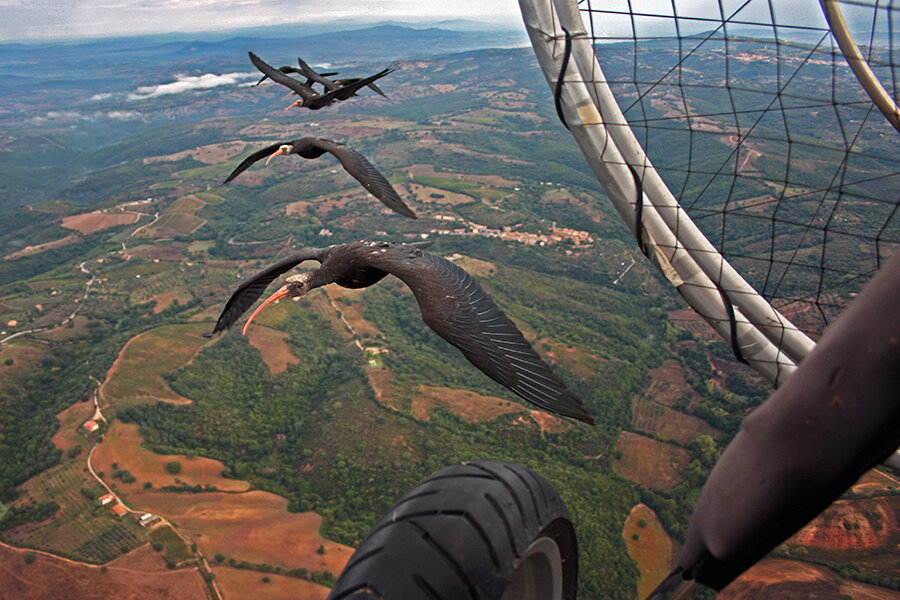Why do birds fly in a V? Science may now have an answer.
Loading...
The reason why some birds fly in a big V is more than just aesthetics, say scientists.
A team led by University of London biologists Steven Portugal and James Usherwood equipped a flock of 14 bald ibises with various measurement devices, and monitored the endangered birds as they migrated from Austria to Italy.
The precision of these measurements allowed the scientists to track the relative positioning of the birds in a V, according to a press release by the university's Royal Veterinary College.
As the birds flew in a V formation, the scientists observed them for just over 43 minutes, recording the each bird's position, speed and direction, according to a press release from the science journal Nature.
Their findings, published in this week's issue of Nature, revealed that birds changed their position of flight or flapped their wings in a manner that gave them "the best aerodynamic advantage."
The ones flying in V formation flapped their wings in phase so that the trailing bird could get an extra lift from the one that was ahead of it, stated the study. Those flying directly behind another bird flapped their wings out of phase to reduce the effects of "detrimental downwash" from the bird ahead of it.
It is basically a balancing act, Dr. Usherwood, who was involved in the study, told the Monitor.
“The intricate mechanisms involved in V formation flight indicate remarkable awareness and ability of birds to respond to the wingpath of nearby flock-mates," said Portugal. "Birds in V formation seem to have developed complex phasing strategies to cope with the dynamic wakes produced by flapping wings."
This behavior also helps conserve energy while flying, says Usherwood
Not all birds fly in V-patterns. Only certain species of birds, such as cranes, pelicans and geese, do.
“Birds which fly in V-formation are fairly big,” Usherwood says. “They fly at the same speed and fly large distances. They usually have long wings.”
This study opens the door to further research about how birds can sense the flow of air, says Usherwood.
“This can also help us look into how aircraft fly together,” he says.
These findings also show that birds can sense and predict the patterns of air turbulence caused by the other birds in the flock.
This complex pattern had previously been suggested from theoretical models, but had not been recorded in free-flying birds, according to the press release by the Royal Veterinary College, University of London.








